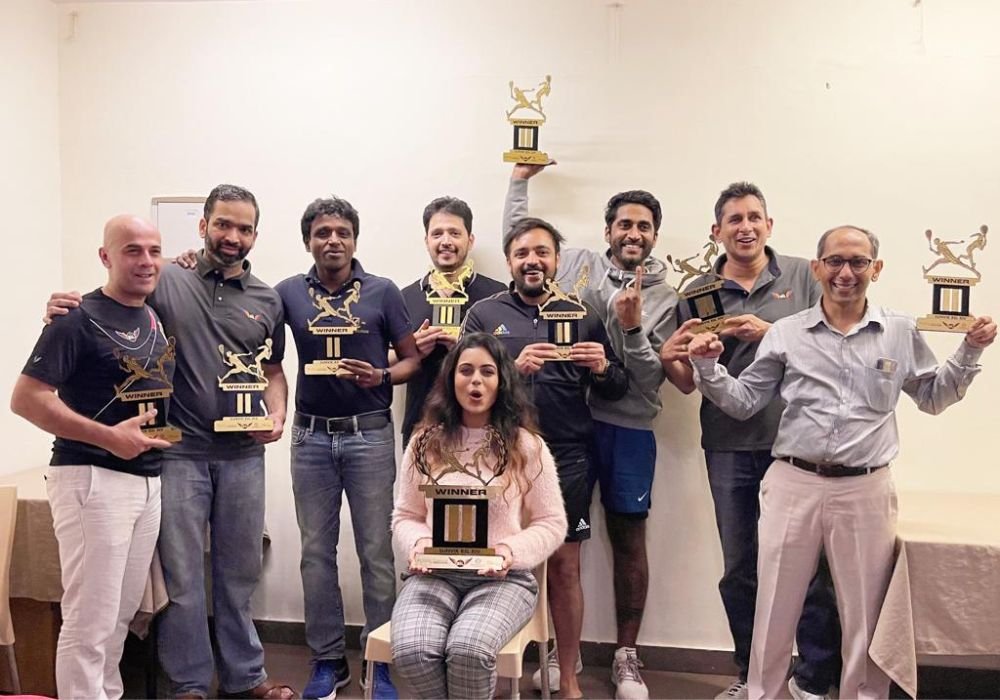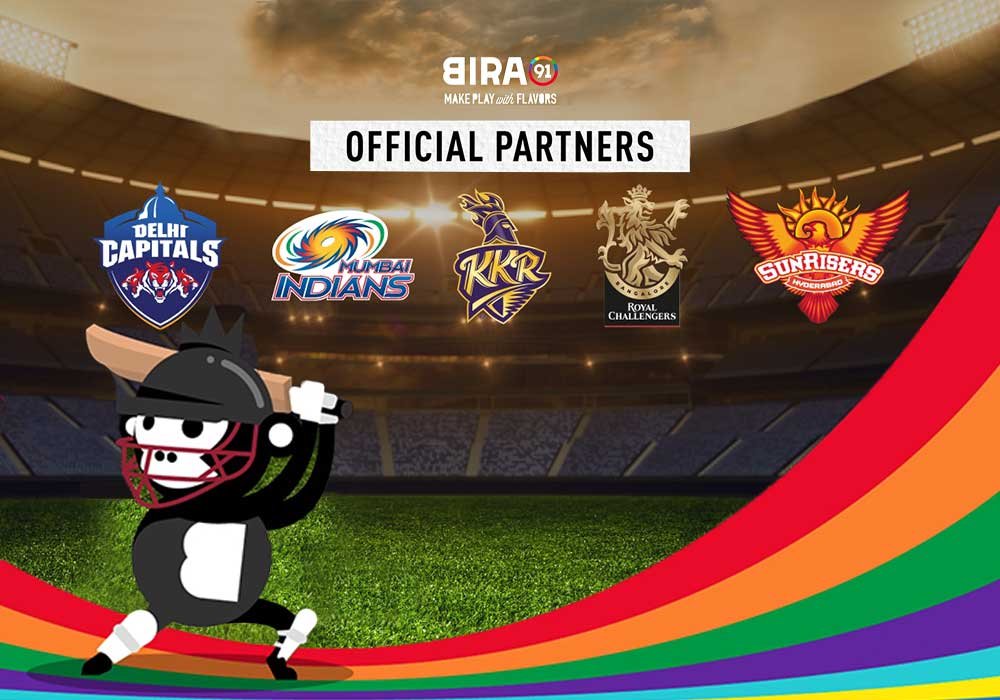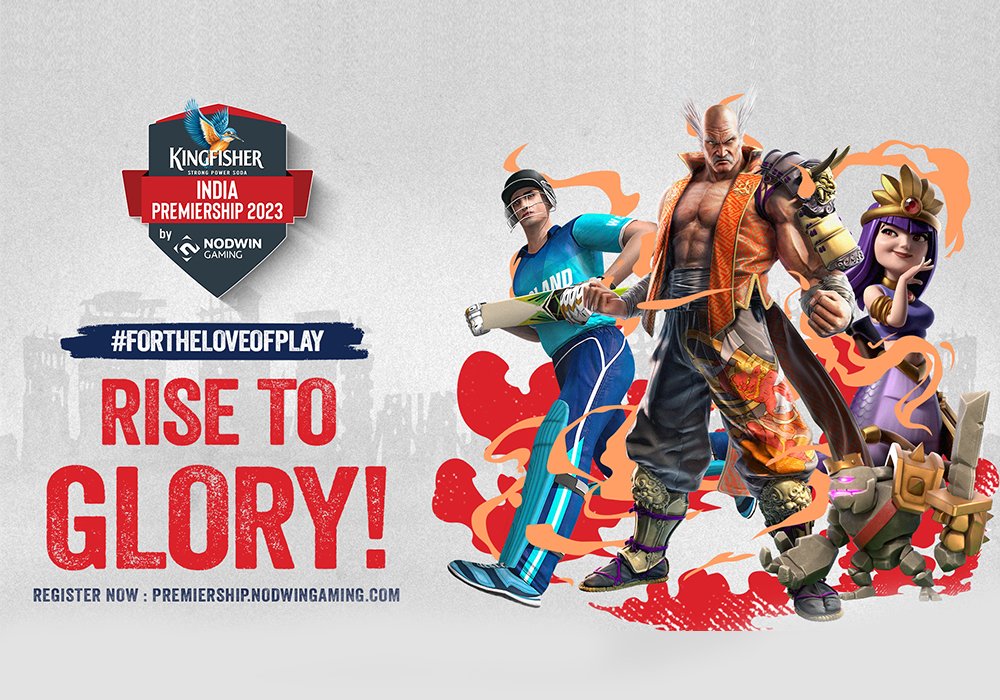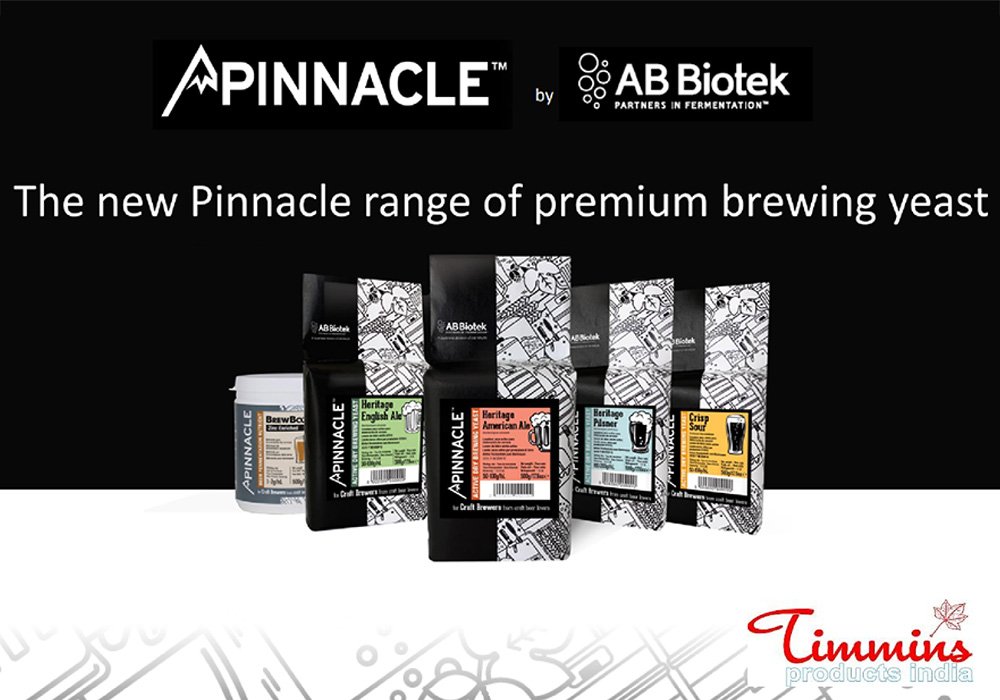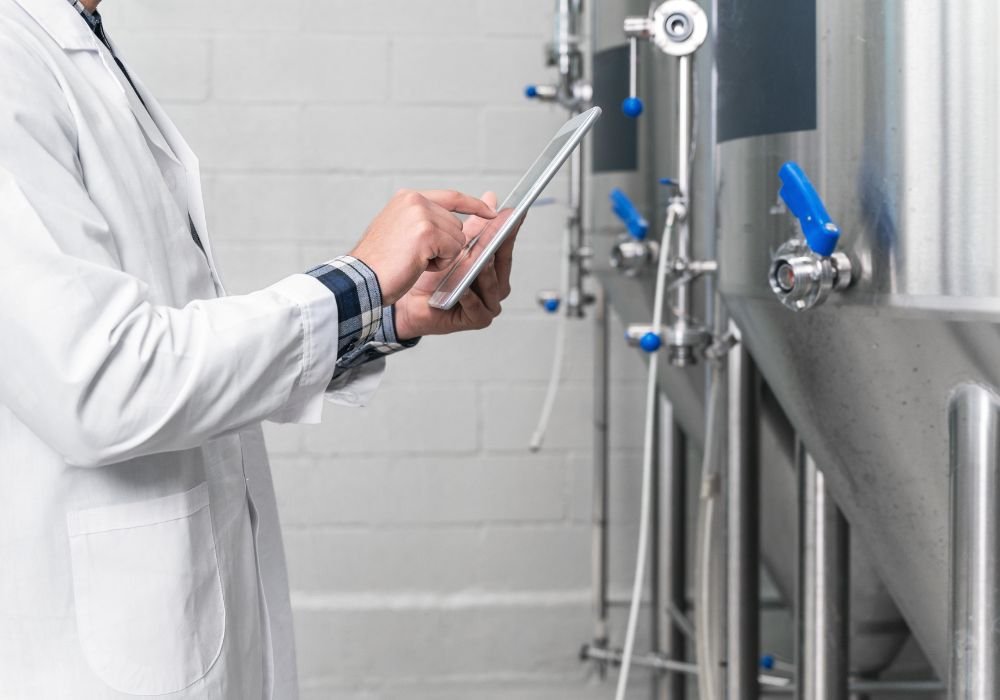
BrewDog, a Scottish brewery based in Ellon, Scotland, was started in 2007 by James Watt and Martin Dickie with a mission to revolutionize the beer industry and challenge traditional brewing conventions.
BrewDog immediately became well-known for its unique and brave approach to brewing, pushing the boundaries with high-quality and unconventional brews. Punk IPA, Hazy Jane, and Elvis Juice are among their most well-known beers.
BrewDog's expansion has been impressive, they own and run several bars and pubs around the world, where they serve their beers alongside a variety of other craft brews. They have a major role in the craft beer sector, noted for their inventive brews and desire to "make other people as passionate about great craft beer as they are."
Mark Hobday, Head of Training and Beer Expert at BrewDog, discusses his inspiration for becoming a beer expert, his idea of a good beer, the importance of beer and food pairing, factors he considers when storing and serving beer, and how he selects beers for a bar menu in an exclusive interview with Brewer World.
You can also watch the full interview here, Brewer World Exclusive
Can you tell us a little bit about yourself? What inspired you to become a beer expert, and how did you get started in the industry?
Absolutely. I started in the industry almost 20 years ago when I was 18. So I started working as a bartender at a bar. And I think that's probably where my passion for beer started from. And I did many years, working as, as I said, as a bartender, moving my way up through into kind of a manager role. And then it just happened within the last five or six years. I found my passion in a training element, so teaching people to be as passionate about beer, as I've said already, about wine and spirits as well. But beer became a passion for me probably about 10 years ago. I don't call myself a beer expert, but I am passionate about beer, and I like to talk about beer. But actually fun. Funnily enough, it was a beer. It was a brutal beer, my first when I tried my first IPA. So Before that, I was just a bit of a lager drinker. Then I tried my first pint of punk, and I said it was about 10 years ago, and it just blew my mind. It was like, "What is this drink? It's like nothing that I've ever liked before. And it was at that point that it made me realise there's so much more to the beer industry than just lagers with the complexity and the different types of IPAs and other weird and wonderful beers that we do now. It came from that; that's where my passion came from. So ever since then, I've been trying lots of different beers, experimenting with different types, and enjoying BrewDog. A year ago, it was just an organisation that I've always been so interested in, and being able to head up their training, is like a dream. So, it started when I was super young, and now at the age I'm at, I've been really excited about what's to come.
Can you tell us a little bit about your role?
I'm the head of training at BrewDog. I support a lot of our new openings. Last year I travelled to Atlanta to help them open up our site there. I spent five weeks in Las Vegas. At the end of last year, which just blew my mind, it was an incredible site. So I do a lot of the project work around training their teams. I also have a collection of what I call regional trainers, one in Australia, Europe, the UK, and America, where I kind of support and coach them and deliver a lot of the training to our teams. They also support some of the, uh, openings. So I do a lot of support for them, including content creation. So when we open up new bars, we want to train them on the history of BrewDog. We want to train on beer, of course—how to feed our guests, how to talk to our guests, how to talk about beer. So I create a lot of the content, whether face-to-face training material, video material, or online courses. Yeah, so it's just so broad, so I looked over the whole training strategy for BrewDog, and I had a small team around me who helped me in regards to delivering that.
What are some of the qualities to look for in a good beer, and how can people identify them?
Make sure it's fresh. That's one of the things BrewDog, especially, prides itself on but likes to talk about making sure that beer is fresh. That's one of the reasons why you'll find the majority of our beer that we don't have out on the taps. It comes in a can because it doesn't get exposed to light, which can degrade the quality of the beer so quickly. So freshness is really important. And from a kind of identity perspective, how can you? Identify that it's things like aroma, taste, and flavour. That's going to be the things that you notice right away. If you have a beer from a tap, from a bar, or you open up a can or a bottle, you are going to be able to smell whether it's kind of, maybe not as good as it should be. It might smell like vinegar, wet cardboard, or things like that. So it's making sure you are using all of your senses, whether it comes to aroma or taste, to be able to see the quality from that perspective, but even if it's fresh, and it tastes great for me, how I identify the actual quality of a beer is the flavours. So make sure they're balanced, so you don't want a beer to be overpowering. You know, you get so many flavours from the hops, and the malts and the yeast we use also have an effect as well. So you want to make sure that all your beers are fresh and balanced and look after them.
Talking about the flavours and aromas, if somebody who's getting started with craft beers, like somebody who wants to experiment with their palate, What are some of the must-have beers that you would recommend starting with?
To start, you must try beers. So you want a bit of a broad spectrum. When I'm speaking to people about getting to understand beers, I'd recommend them to go for a lager from a basic fresh, crisp, great for the summer months or like a Pilsner or something. It's a bit more of a basic flavour, but it's a really good way to introduce yourself to it and then an IPA. Sometimes, like punk or maybe hazy Jane, you get more of a fruity and accessible kind of beer to start with something that's becoming quite popular at the moment: sour beers with some acidity. Try those different types, and then you can. Everyone's palate is very different, so not everybody's necessarily going to taste the same thing. So I think it's really important to go from different spectrums when it's more of a primary flavour to a sour beer or a stout. Something like that where you get a lot more complexity, but yeah, lager and ipa, the start would be that.
What are some of the major factors you consider while storing or serving beers, and how do you ensure guests get the best possible experience from the beers?
Yeah, so one of the biggest things, especially around our bars, when we have any problems, whether people think maybe it doesn't taste right, how to get, as you say, our best experience is all about temperature. So make sure where you're storing your beer is at the correct temperature, because if beer storage is going 5–10 degrees and that's storage, whether it's a seller's cold room, if it gets warm, that beer's just going to taste off, it's going to be foamy, it's going to be warm, and it's going to degrade. So, one of the biggest things is keeping it at the right temperature. And as I said before, a bit around the storage of the beer—whether it's in a can, you don't want to expose it to too much light, or if it's in a bottle, you don't want to expose it to too much light— So if you have a glass bottle, make sure it's stored somewhere dark, and if you saw them in a fridge to serve to a guest, make sure you rotate it. You always want to make sure that the guests are getting that kind of freshness. But one of the biggest things I say to anybody I'm training or any bars, especially those we're opening, is to look after your storage. So whether it's a room or a seller, make sure it's cold. Don't keep the door open. I know it sounds really silly, but making sure that you're maintaining it and looking after all the equipment, even the lines going from the seller to the tap, making sure it's kept clean, and just looking after your equipment, that's the real biggest thing there for me.
How do you go about selecting beers for a bar & restaurant menu?
The first thing that you think about is the range. So you want to make sure that, especially at BrewDog, we have a wide range of different styles. Within different lagers, stouts, IPAs, and ciders, and with that kind of variation, when we have different types of beers, we are showcasing varied types of hops and malts. Making sure that we are using various ingredients, it's all about that kind of variety and excitement, which I think is something we want to consider. We want people to try something amazing every time they visit one of our bars or restaurants, whether a new beer or a kind of quirky style that maybe we brew in one of our small outposts, or limited editions or things we are just going to brew one time just to experiment. Something that we like to do at BrewDog is, we also want to look at the different styles, the different types when we are picking the different ABVs and the different strengths. We want to look at maybe some more entry-level, what we call session-able beers. So things that are lower ABV, but people can have a couple on like a summer's day and in a social environment, but we also want some of those more punchy beers that maybe have a slightly higher ABV that you want to drink a bit less of, but there are so much more weird and wonderful things that we can do with those higher ABV. So we want to make sure we're not just going for the standard four to six per cent. We want that range. And finally, we just want our teams. It's really important for our teams and our kind of management. They're buying into the different types of beers that we're kind of putting on our menu. So making sure we're engaging our teams is so fundamental because, for us at BrewDog, we want everyone to be as passionate about craft beer as we are, and to keep our teams passionate, we have to think about them as well because they're talking about it to our guests.

We spoke about trends and developments, alcohol-free beers, and how you think consumer preferences have changed over the years.
It's been really interesting when you say consumer preference. I said I've been in that industry for about 20 years, and the kind consumers, the guests, have so much more knowledge now. And there's that expectation when a guest comes to the bar or whether we serve a guest at a table; they're coming into your bar, into your restaurant. They've already looked at reviews or looked into the drinks that you serve. So they've already got a bit of knowledge, and we must keep up with that. It gives them that great experience. For me, it's another key thing that's changed. You know, you've got so many pubs and bars and restaurants in the hospitality industry that guests now want to get value for money, and that's not really about how cheap or expensive beer is. So for me, it's making sure that they get that whole experience. And I think with BrewDog especially, it's something that we've got our finger on the pulse with, you know, different events; we do things that no one else does. And we do dog parties. We do a kind of beer school. We want to teach our guests and make them passionate about beers. I know I've touched on that earlier, but is that kind of lifestyle or healthy living? So we do, as I said, the alcohol-free stuff. We do some low-calorie beer, I think it's understanding what the guests want now. And I think they are; they've just got a lot more information in hand, especially with social media and the internet. So it's making sure we are still those experts and giving them that great experience.
What according to you, are some of the challenges that the beer industry is facing right now?
One of the topical ones I would say at the moment, especially around the UK, and Europe is a lot around the cost of living. Prices are going up. Uh, consumers have less disposable income. With everything that we're facing and various economic conditions, especially post-pandemic, we've got to think about how we can really help them and how we can appeal to that market of people that don't have maybe as much disposable income. So that's definitely something that I know we felt in the UK and in and around Europe. I think that's definitely a big kind of challenge. But I think we've had to evolve, and some of the great things that I've seen, especially in the Indian market as well, are using more locally sourced ingredients, whether that's the most, the barley, the types of yeast, or experimenting with different flavours and spices. We're becoming a bit savvier in how we make our beers and still give them that premium product there, too. So working a bit smarter and still being able to deliver a great product that is still accessible to the masses is the challenge.
Can you tell us your favourite food and beer pairing? How important is pairing the right food with the beer?
It's a big thing now. Like again, it used to be such a science, I think in the last couple of years with food being such an important market for hospitality, but more so for something I am teaching myself, but for me, the kind of fundamentals are making sure that you're not having a beer that overpowers the food that you're eating because you, what you wanna do is complimenting the drink and the dish, or you're contrasting. So, for example, IPAs are great with spicy foods. Okay. So I've been, you know, and, you know, also things like steak, red meats because you've got the bold flavours of the IPA with the bold flavours of the spicy foods, so they go quite well together. One thing to avoid when it comes to spicy food is the more carbonated drinks, like some of your lagers and things. That can amplify the spice and overpower it. So that's where IPA likes red meat, or if you like your food spicy. That's an IPA right there. That's a real compliment there.
Another example of a would perhaps be a lager; it's quite a refreshing, crisp drink there. So it pairs well with salads, or if you're having some chips or some fries, good for the saltiness of the chips. It goes well with the Crisp Lager, like Lost Lager, for example, would be great. So, I would go with that. If you're looking at darker beers, for example, like our black Heart, you're going to find that quite heavy, quite bold, so it goes well with desserts. Quite a lot of shellfish, funnily enough, on barbecues.
What is that one piece of advice that you would like to give somebody who wants to enter the beer industry or wants to become a beer expert?
Try different beers. I think it is actually the things that you think you're not going to like. So this is something that I've done myself. I never used to like dark beers or sour beers, but because I wanted to understand beers, I wanted to talk about them, and because I was so passionate, I just tried beers. And I think it's a good thing if somebody wants to learn about beers, and again, it goes back to that experience that we have within Brewdog; we give tasters to everybody. If you're not sure what you want to drink, the teams at BrewDog will give you a taste of whatever you want, so you might find something. There's nothing better than actually giving somebody something they would never normally try, and it kind of completely blows their mind. But if you're somebody that wants to learn more about beer, it's just that the craft beer in the industry is so fast now with all the different stuff. Try things. Find out what you like. Maybe find out what you don't like. That's the biggest bit of advice: just try them and go into a brutal bar and try them. They'll let you try loads.
We've talked so much about beers; what is your go-to beer?
If I go into a BrewDog beer, I'll have a pint of punk. It was the first beer that I got that got me into it. If anybody is wanting to try something different, I would always say, "Go and try a punk. But if you are maybe not a fan of beer or not a fan of IPAs or anything like that, maybe try a kind of New England IPA. I like hazy Jane, it's not bitter or hoppy, it's fruitier. For an entry-level beer, I would go for that. And if I'm not in the mood for something bitter, I will go for Hazy Jane especially the guava one that we do, is amazing. So, Jane Guava, and punk. I think I go punk because for me it's the kind of original, but me and my other half, we love a jane guava there too, so I'm gonna go with two.
What's next with BrewDog? What are your goals and objectives? What are the plans?
I mean, there is so much at the moment. We're doing, our sort of big thing is beer, people, and the planet. So we are going to continue to look at how we can be more sustainable as a business. It's a big passion of James and Martin, our founders. It's really at their heart: making sure that we have a planet to brew beer on for future generations. So, we will continue to look at real innovative ways of how we can make our beer, but reducing it—I mean, we're already carbon negative brewery, and we were the first ones to ever have that title. And we want to build on looking after our planet more and more and going more global, especially within the Indian market because it's such an emerging market and the sort of craft there is and what they're doing with the local breweries there too. We're going to continue to open more bars within the Indian market and tap into other countries that may haven't got as much of a craft beer industry experience. As I go back to our mission, we want to make people as passionate about beer as we are. So we want to take that message out into the world. So it's super exciting to see how we're going to become more sustainable and, uh, how we're going to build and be the real leaders within the craft beer industry.
